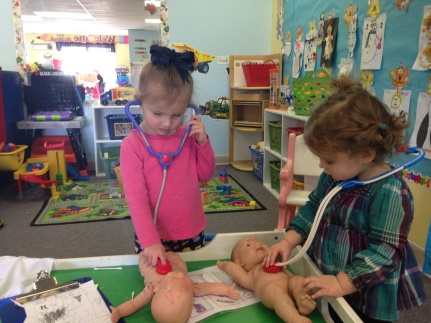What is an emergent and enquiry based curriculum?
Emergent curriculum is a philosophy of teaching and way of planning curriculum that focuses on being responsive to children's interests to create meaningful learning experiences. ……This philosophy prioritizes active participation, relationship building, flexible and adaptable methods, inquiry, and play-based learning. Curriculum is child-initiated, collaborative and responsive to the children's needs. Proponents of this style of teaching advocate that knowledge of the children is the key to success in your program (Cassidy, Mims, Rucker, & Boone, 2003; Crowther, 2005; Jones & Reynolds, 2011; MachLachlan, Fleer, & Edwards, 2013; Stacey, 2009a; Stacey, 2011b; Wein, 2008; Wright, 1997).
Where to start
The starting point for any emergent curriculum begins with teachers as facilitators who carefully observe and record these observations on children at play in the classroom. The documented evidence is used to plan meaningful activities for the children based on their interests. Using this evidence as a planning tool provides for a horizontal learning experience which scaffolds learning for children. As the curriculum is continually changing, emerging and developing, early years practioners need to ensure that some time is set aside for reflection on their observations and plan activities to extend on children's interests.
What we need
 Once the early years professional observes a child’s interest they can use this evidence to develop activities that compliment and build upon this emerging interest, with opportunities for play at multiple ability levels. Observations on these planned activities can then be modified to accommodate increasing interest or changes in direction of the learning.
Once the early years professional observes a child’s interest they can use this evidence to develop activities that compliment and build upon this emerging interest, with opportunities for play at multiple ability levels. Observations on these planned activities can then be modified to accommodate increasing interest or changes in direction of the learning.
 It is important to organise the learning environment into core curriculum areas or areas of specific interest where activities may have a curricular theme while following children's interests. In emergent curriculum settings, there should be opportunity to involve all the senses, challenge creativity, hear and use oral and written language, explore art media, practice solving interpersonal problems, conduct investigations and ask questions, explore and order material, and acquire various physical skills (Crowther, 2005; MachLachlan et al., 2013; Wright, 1997). It is still essential for children to understand what is coming next and a good daily routine or daily schedule is vital.
It is important to organise the learning environment into core curriculum areas or areas of specific interest where activities may have a curricular theme while following children's interests. In emergent curriculum settings, there should be opportunity to involve all the senses, challenge creativity, hear and use oral and written language, explore art media, practice solving interpersonal problems, conduct investigations and ask questions, explore and order material, and acquire various physical skills (Crowther, 2005; MachLachlan et al., 2013; Wright, 1997). It is still essential for children to understand what is coming next and a good daily routine or daily schedule is vital.
The learning environment
As an emergent curriculum focuses on children's independence and scaffolds learning through developing interests, the learning environment  is an essential component. Areas of interest contain equipment, toys and materials which are stored at children's level in order for them to be fully
is an essential component. Areas of interest contain equipment, toys and materials which are stored at children's level in order for them to be fully  accessible to the children visually and physically. Areas and equipment are labelled with words and pictures, and materials are kept in clear storage containers for ease of access. In order to accommodate different types of learning the environment should provide opportunities for children to work in groups of different sizes, as well independently. Using open ended materials allows children to experience and manipulate materials in different ways.
accessible to the children visually and physically. Areas and equipment are labelled with words and pictures, and materials are kept in clear storage containers for ease of access. In order to accommodate different types of learning the environment should provide opportunities for children to work in groups of different sizes, as well independently. Using open ended materials allows children to experience and manipulate materials in different ways.
The Aistear Siolta Practice Guide provides activities, podcasts and a range self-evaluation tools to help services to develop a curriculum statement and develop an emergent and enquiry based curriculum. This section of the guide is available at;
http://www.ncca.ie/en/Practice-Guide/Curriculum-Foundations/
Kildare County Childcare Committee have recently added to their website and introduced more information on curriculum development. Click here